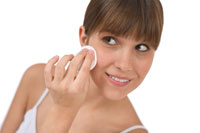|
 Topical and systemic antibiotics are commonly used to treat acne, with topical ointments usually used for mild to moderate cases and systemic treatments reserved for patients with moderate to severe acne. However, due to increased risk of resistant bacteria in the last two decades, antibiotics are typically only used for short periods of time. Antibacterial agents like benzoyl peroxide and azelaic acid are often used in combination with antibiotics since this has been shown to reduce the occurrence of resistant bacteria.1 Topical and systemic antibiotics are commonly used to treat acne, with topical ointments usually used for mild to moderate cases and systemic treatments reserved for patients with moderate to severe acne. However, due to increased risk of resistant bacteria in the last two decades, antibiotics are typically only used for short periods of time. Antibacterial agents like benzoyl peroxide and azelaic acid are often used in combination with antibiotics since this has been shown to reduce the occurrence of resistant bacteria.1
One of the most frequently prescribed topical antibiotic, and most effective, is a cream containing benzoyl peroxide and azelaic acid. Erythromycin has been shown to significantly reduce Propionibacterium acnes P. acnes bacteria, and is available as a solution, ointment, or gel. However, research has raised concerns about the usefulness of 2% erythromycin monotherapy because of increased incidence of bacteria resistant to this antibiotic. But when combined with benzoyl peroxide, retinoids, or zinc it is more effective than monotherapy creams or gels and less likely to contribute to bacterial resistance by P. acnes or opportunistic infection by resistant Staphylococcus aureus (MRSA).1
Erythromycin has been challenged in some studies by a relative newcomer to the topical antibiotic genre by nadilfloxacin, sold under the brand name Nadixa®. In a double-blind multinational study, the two were compared during a 12-week treatment period in 474 European teenaged to age-36 male and female patients with slight to moderate acne. Applied twice daily, both creams were found to be effective in significantly reducing acne lesions, including inflamed comedones. Both were also found to be equally safe, with only minor adverse side effects (e.g., itchiness, redness, and dry skin). However, the group randomly assigned to use the 2% erythromycin cream showed significantly higher numbers of resistant P. acnes microbes and other bacteria compared to the group given the 1% nadilfloxacin cream to use.2
Increasing the amount of active drug in monotherapy erythromycin creams from 1-2% to 4% appears to overcome resistant bacteria.1 At least one clinical study testing a 4% erythromycin gel in comparison to a 1% nadilfloxacin cream for patients with mild to moderate acne confirmed that the higher dosage is as effective as nadilfloxacin and remains equally safe and well-tolerated.3
|